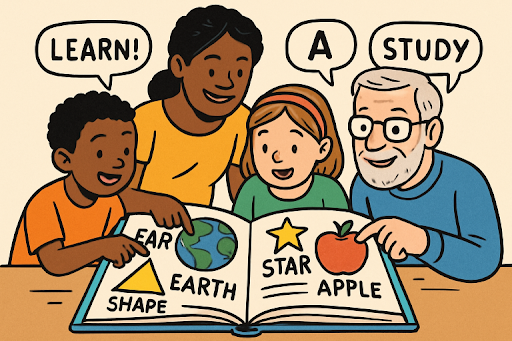Why Visuals Matter in Learning
A powerful image simplifies complex ideas and aids retention, revolutionizing educational books by combining visuals with text. Visual cues help bridge abstract concepts, enhancing comprehension and recall. The brain processes images quickly, making them effective for inclusive teaching. When thoughtfully integrated, illustrations increase engagement and understanding for learners of all backgrounds, especially young students and those with diverse learning styles.
The Rise of Illustrated Books in Education
Illustrated texts have evolved rapidly, expanding beyond early childhood picture books. Today, they include infographics in math workbooks, diagrams in science textbooks, and graphic novels that make historical events or literary classics accessible. This rise aligns with the understanding that diverse learners benefit from multiple entry points into academic material. By meeting students at their level and addressing multiple intelligences, illustrated educational books foster motivation and inclusivity. Visual learning sometimes becomes the final link in speech therapy, helping students strengthen comprehension and communication skills through imagery. The trend reflects a larger movement for educational publishers and teachers to create engaging, tailored solutions for modern learners.

Benefits for Different Types of Learners
Every student learns differently. Visual learners benefit from illustrations, which also aid kinesthetic and auditory learners by providing context, inspiring exploration, and prompting discussion. Illustrated books foster critical thinking, lower participation barriers, and improve problem-solving by visually simplifying complex ideas and supporting mastery for all learners.
Supporting Literacy Through Illustration
Illustrated books are crucial for building literacy skills. Visuals help young children with word recognition and story comprehension, and they support emotional intelligence by showing facial expressions and social scenarios. High-quality illustrations benefit not only emergent readers but also older students, boosting confidence and understanding in nonfiction and guides. These visual aids promote engagement and equal opportunity in learning.
Digital vs. Print Illustrated Books
Digital technology has greatly expanded access to educational content. While print books offer tactile benefits like turning pages and high-quality prints, digital books provide interactivity, animations, and instant access. Features like zooming, clickable definitions, and narration support learning. For educators and libraries, offering both formats ensures students find resources suited to their preferences and needs. As technology advances, these formats complement each other rather than compete.
How to Choose the Best Illustrated Books
Selecting high-quality illustrated books involves considering age appropriateness, cultural relevance, accuracy, artistic quality, and interactive features. Choose books with diverse characters, inclusive imagery, and context-sensitive narratives. Prioritize factual content, especially in STEM and history subjects. Evaluate color, composition, and character design for clarity and engagement. Consider digital resources’ navigation and interactive features for user engagement. Consult with educators and school librarians for recommendations.
Creative Uses in the Classroom and Beyond
Illustrated educational books go beyond reading, inspiring exploration, collaboration, and creativity. Educators use visual prompts in writing, speaking, and discussions. Parents incorporate comics and stories into routines, turning bedtime into learning moments. Community groups host “illustration days” where children and adults interpret lessons through art, enhancing understanding and communication. These resources uniquely promote cross-generational learning, creativity, and empathy, making them valuable across various educational settings.
Looking Ahead: The Future of Illustrated Educational Content
The future of illustrated educational books is evolving with new technologies enabling adaptive, interactive, and multilingual resources that increase accessibility worldwide. Emphasizing inclusive storytelling and personalized learning, the next generation will be more immersive and tailored, serving as a guide for accessible, engaging learning for children, language learners, or lifelong students. As publishers, educators, and families explore visual storytelling, these books are set to reshape literacy and academic achievement for future generations.



